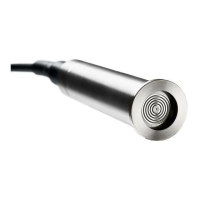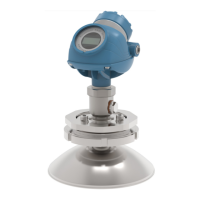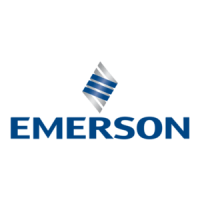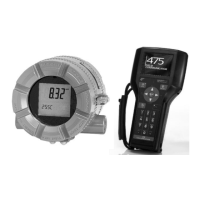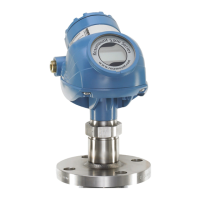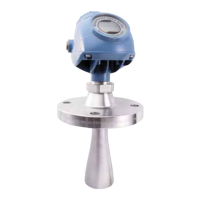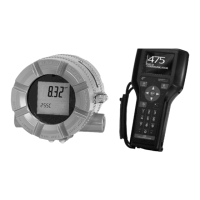Do you have a question about the Emerson Rosemount 56 and is the answer not in the manual?
Crucial safety information, warnings, and precautions for instrument operation.
Step-by-step guide for initial setup, configuration, and basic operation.
Overview of the analyzer's capabilities, applications, and key features.
Details on advanced functionalities like process trending, data logging, and PID control.
Physical and environmental specifications, power requirements, and dimensions.
Procedures for checking the instrument upon arrival and preparing for installation.
Guidelines for selecting an installation location and mounting the analyzer.
Overview of wiring components, connectors, and signal input boards.
Detailed instructions for connecting power, current outputs, and sensor cables.
Explanation of the analyzer's display, keypad, and user interaction elements.
Details on interpreting the main display and navigating the menu structure.
Information on using the USB port for data transfer and logger download.
Overview of typical programming tasks and menu system access.
How to modify initial measurement and unit settings after Quick Start.
Configuring temperature compensation and setting analog current outputs.
Implementing security levels to protect instrument settings and calibration.
General guide to configuring measurement types, units, and filters.
Specific steps for configuring pH and ORP sensor inputs and parameters.
Instructions for configuring contacting and toroidal conductivity measurements.
Steps for configuring Free, Total, and Monochloramine chlorine measurements.
Explanation of PID control principles, measurement, and set points.
Details on PID tuning parameters like Gain, Integral, Derivative, and Bias.
Explanation of TPC, its application with relays, and the % On Time concept.
Configuring TPC control for relays, including setpoints and timing parameters.
Overview of alarm relays, their functions, and control options.
Configuring setpoint alarms with adjustable deadband and logic.
Setting up delay timers for chemical addition and bleed/feed sequences.
General calibration principles and specific procedures for pH sensor calibration.
Calibration methods for ORP, contacting, and toroidal conductivity sensors.
Calibration procedures for chlorine, oxygen, ozone, and temperature measurements.
Overview of HART communication, versions, and device identification details.
Wiring, bus configuration, and setting up HART communication parameters.
Available measurements and diagnostic status bits accessible via HART.
Overview of Profibus DP-V1 compatibility, features, and module types.
Steps for setting baud rates, slave addresses, and cable diagnostics.
Details on data transmission protocols and available measurement/relay modules.
General maintenance guidelines and procedures for cleaning the analyzer.
Safety notes and precautions related to the USB port.
Steps for returning the instrument for warranty or non-warranty repair.
Crucial safety information, warnings, and precautions for instrument operation.
Step-by-step guide for initial setup, configuration, and basic operation.
Overview of the analyzer's capabilities, applications, and key features.
Details on advanced functionalities like process trending, data logging, and PID control.
Physical and environmental specifications, power requirements, and dimensions.
Procedures for checking the instrument upon arrival and preparing for installation.
Guidelines for selecting an installation location and mounting the analyzer.
Overview of wiring components, connectors, and signal input boards.
Detailed instructions for connecting power, current outputs, and sensor cables.
Explanation of the analyzer's display, keypad, and user interaction elements.
Details on interpreting the main display and navigating the menu structure.
Information on using the USB port for data transfer and logger download.
Overview of typical programming tasks and menu system access.
How to modify initial measurement and unit settings after Quick Start.
Configuring temperature compensation and setting analog current outputs.
Implementing security levels to protect instrument settings and calibration.
General guide to configuring measurement types, units, and filters.
Specific steps for configuring pH and ORP sensor inputs and parameters.
Instructions for configuring contacting and toroidal conductivity measurements.
Steps for configuring Free, Total, and Monochloramine chlorine measurements.
Explanation of PID control principles, measurement, and set points.
Details on PID tuning parameters like Gain, Integral, Derivative, and Bias.
Explanation of TPC, its application with relays, and the % On Time concept.
Configuring TPC control for relays, including setpoints and timing parameters.
Overview of alarm relays, their functions, and control options.
Configuring setpoint alarms with adjustable deadband and logic.
Setting up delay timers for chemical addition and bleed/feed sequences.
General calibration principles and specific procedures for pH sensor calibration.
Calibration methods for ORP, contacting, and toroidal conductivity sensors.
Calibration procedures for chlorine, oxygen, ozone, and temperature measurements.
Overview of HART communication, versions, and device identification details.
Wiring, bus configuration, and setting up HART communication parameters.
Available measurements and diagnostic status bits accessible via HART.
Overview of Profibus DP-V1 compatibility, features, and module types.
Steps for setting baud rates, slave addresses, and cable diagnostics.
Details on data transmission protocols and available measurement/relay modules.
General maintenance guidelines and procedures for cleaning the analyzer.
Safety notes and precautions related to the USB port.
Steps for returning the instrument for warranty or non-warranty repair.
| Category | Transmitter |
|---|---|
| Output Signal | 4-20 mA HART, FOUNDATION Fieldbus |
| Power Supply | 24 VDC |
| Temperature Range | -40 to 85 °C |
| Ambient Temperature Range | -40 to 80°C |
| Process Connection | Flanged |
| Enclosure Rating | Type 4X, IP66 |
| Communication Protocol | HART, FOUNDATION Fieldbus |
| Material | 316L Stainless Steel |
| Process Temperature Range | -40 to 200°C |
